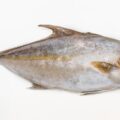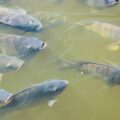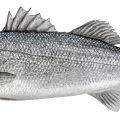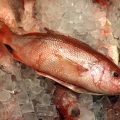Although grouper and tarpon are saltwater fish, they are members of separate families and have distinct behavioral and physical differences.
Grouper, which includes a species of sea bass, inhabits the coastal waters of the Atlantic, Pacific, and Indian Oceans. They can reach a size of over 800 pounds and have a stocky, elongated form. Tarpons, on the other hand, are a type of fish that live in the warm seas of the Atlantic, Caribbean, and Gulf of Mexico and are a part of the Megalopidae family. Tarpons, which may reach a length of 8 feet and a weight of more than 280 pounds, are well-known for their massive size and silvery coloring.
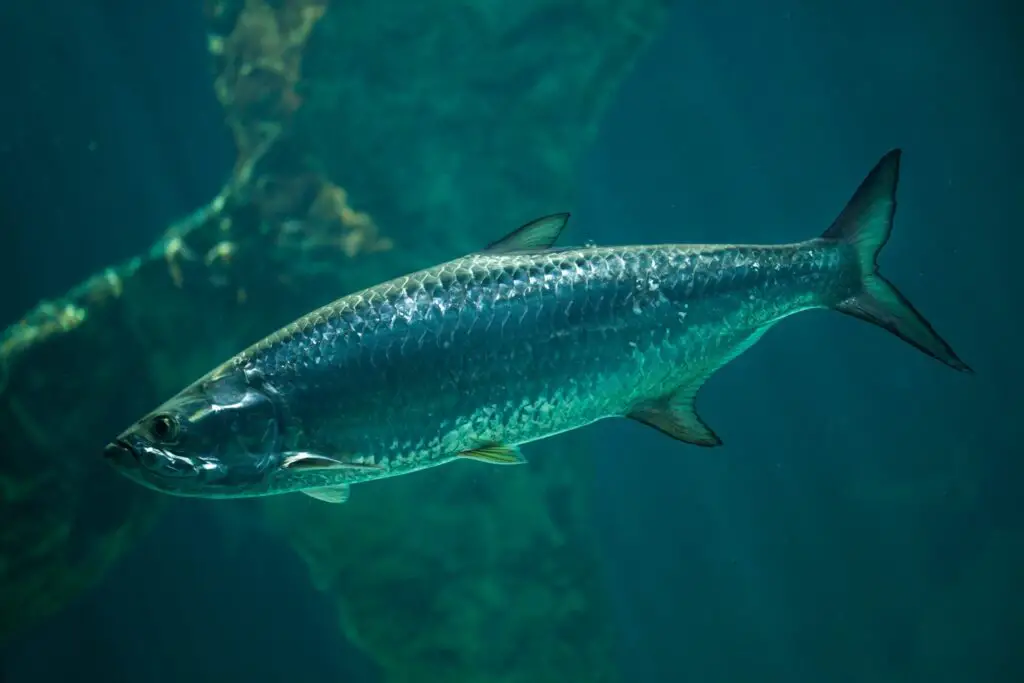
Grouper Vs Tarpons: Description
Grouper is a kind of fish that belongs to the family Epinephelidae. They live near the coasts of the Atlantic, Pacific, and Indian Oceans. Groupers have thick, long bodies. Most of the time, they are mottled or spotted, which helps them blend in with their environment.
Their fins are big and round, and the top of their head is flat and wide. Grouper usually eat smaller fish and crustaceans, and they are known to be aggressive hunters. Groupers are both a popular type of seafood and a sport fish. Groupers can live up to 15 years on average.
The tarpon, or megalops, is a fish species that is classified in the family Megalopidae. You’ll come across them in the tropical seas of the Atlantic, Caribbean, and Gulf of Mexico. The tarpon is a vast, silvery fish that may reach a length of 8 feet and a weight of more than 280 pounds. They are large and slender with long dorsal fins.
Tarpon has big, deep mouths full of sharp teeth that they utilize to scavenge for food in the water. They are also famed for their acrobatic leaps when hooked on a hook. Because of their size, power, and fighting prowess, the tarpon is much sought after by sports anglers. Some cultures even enjoy them as a tasty treat. Like other fish, they migrate in search of food and breeding grounds.
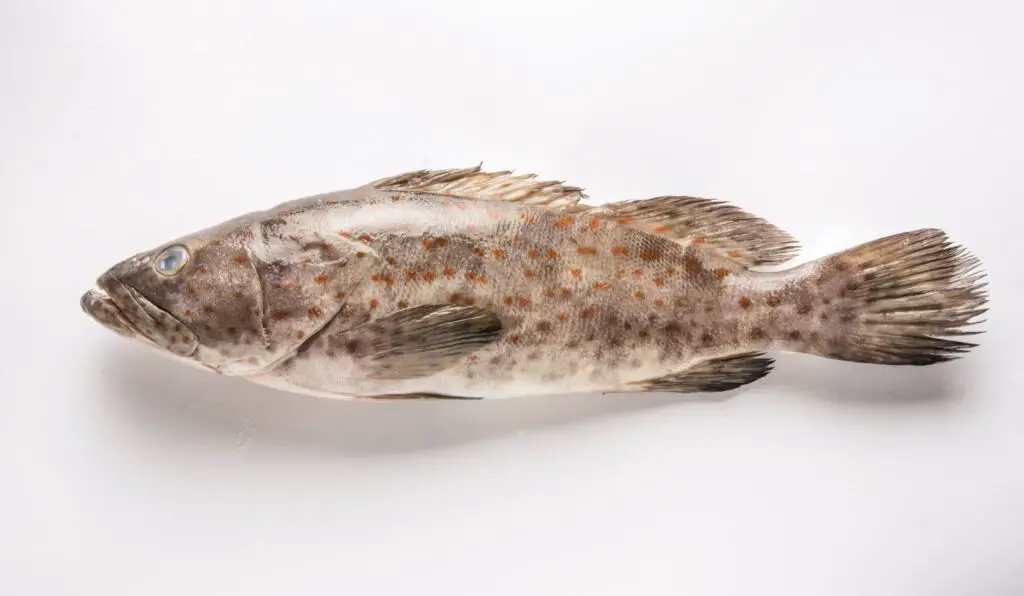
Behavioral Differences: Grouper vs. Tarpons
Groupers are a type of fish that act in a few different ways. Here are some of these traits:
-
- Groupers are usually slow-moving fish that hide in caves, crevices, and other underwater structures.
-
- Usually alone or in small groups.
-
- Groupers are known to be territorial, which means they will fight other fish for their territory.
-
- Groupers are usually more active in the morning and evening; at night, they tend to sleep.
-
- Groupers are ambush predators, which means they wait for their prey and then strike quickly when the chance comes.
-
- Some species of groupers gather in large groups at certain times and places to spawn. These groups are called spawning aggregations.
Although tarpons are typically thought of as solitary fish, they have been observed crowding in vast schools during the spawning season. During the day, they can be observed jumping and flipping near the water’s surface when they are most active. They are also opportunistic eaters, using a wide range of food sources. Tarpons are renowned for their acrobatic jumping and running, and they put up a fierce struggle when hooked. Additionally, they can hold their breath for very long times, allowing them to remain underwater for long periods while hunting or avoiding predators.
Grouper Vs. Tarpons: Interesting Facts
Grouper
-
- Some grouper species can grow more than 8 feet long and weigh more than 800 pounds.
-
- Groupers live in warm coastal waters worldwide, mainly in the Atlantic, Pacific, and Indian Oceans.
-
- They live on the bottom and can be found in areas with rocks, coral, mangrove swamps, and seagrass beds.
-
- Groupers eat smaller fish and crustaceans. They are carnivores.
-
- Some types of groupers, like the Goliath grouper, are thought to be in danger of going extinct because they have been caught too much.
-
- Grouper is also a very popular fish that is sold in markets and restaurants all over the world.
-
- Grouper has firm, white meat that tastes mild and sweet.
-
- Grouper is a good source of Omega-3 fatty acids.
Tarpons
-
- Tarpons are big fish that eat other fish. They can get up to 8 feet long and 280 pounds heavy.
-
- When hooked, they jump high and move around in strange ways, which makes them popular game fish.
-
- Tarpons live in tropical and subtropical waters all over the world, including the Gulf of Mexico, the Caribbean, and the east coast of North America.
-
- Tarpon has a unique way of breathing that lets them swallow air from the surface. They use this air to add oxygen in their gills.
-
- Tarpons can also spawn in large groups, called a “tarpon run,” and can be a beautiful sight.
-
- Tarpon is one of the most sought-after game fish and has been called the “Silver King.” Tarpons can live for up to 50 years.
Spawning of Grouper and Tarpons
Most groupers are protogynous hermaphrodites, meaning they mature only as females but are capable of sex-switching once they reach adulthood. Until they reach 3 kilograms in weight, some grouper species are considered juveniles and grow at a rate of around a kilogram per year. The largest males usually dominate harems of anywhere from three to fifteen females. The competitive exclusion of smaller males from the reproductive process is facilitated in groupers by pair spawning.
Groupers tend to spawn in big groups at certain times of the year and in certain seasons. Depending on the type of grouper and the population, the exact time and place of spawning can be different. Some things that can affect spawning are the size and age of the fish and the temperature of the water and the moon. Some grouper species gather to spawn at certain places, like coral reefs or ledges. Eggs and sperm are released into the water, and fertilization happens outside the animal. After the eggs are fertilized, they change into larvae and young fish.
Tarpons usually spawn in the spring and summer in the Gulf of Mexico and along Florida’s Atlantic coast. The exact time can change based on location and water temperature. Most of the time, spawning happens near the water’s surface at night. A female tarpon can lay up to 12 million eggs during a single spawning event. The male tarpons fertilize the eggs and the young hatch in a day or two. The young tarpons, called fry, float on the water for the first few weeks of their lives. When they grow up, they start eating small fish and crustaceans.
Tarpons Vs. Grouper: Diet
Since they are carnivores, grouper feed on other fish species, crabs, and mollusks, and it has been discovered that certain grouper species also eat squid and octopus. The dietary preferences of groupers can change with their habitat and species. For instance, groupers in the Atlantic Ocean may eat predominantly crustaceans, while grouper in the Pacific Ocean may eat mostly tiny fish.
Tarpons are opportunistic predators whose food changes depending on their size and environment. Young tarpons use shrimp and other tiny fish as their primary food sources. Adults switch to eating larger fish like mullet, sardines, herring, and other small fish as their diet becomes too tiny. They supplement their diet with crabs, squid, and other invertebrates. It is common for adult tarpons to feast on jacks, ladyfish, needlefish, and even smaller tarpons. Tarpons have a wide diet, including amphibians, reptiles, and even birds that live near the water’s surface.
Conclusion
The main differences between a grouper and a tarpon are that it is a more solitary fish, has greater value, and lessens its vulnerability to predation.
Remember, both the grouper and the tarpon are large fish, yet their habitats and natures are very different. Tarpons prefer shallow coastal waters, while groupers prefer deeper water. Due to environmental factors, these hunters employ distinct techniques. Whereas groupers are systematic in their hunts, the tarpon is swift and opportunistic.
One of the most incredible things about tarpon fishing is watching these athletic fish in action. When hooked, the fish will use its powerful physique and lightning speed to escape the water. Take care, as these leaps usually free the fish from the hook.

